Nothing captures the essence of autumn quite like boiled apple cider syrup—a thick, tangy-sweet reduction of fresh apple cider that enhances everything from pancakes to baked goods. This tangy-sweet reduction elevates my Apple Cider Muffins and Apple Cider Whoopie Pies from delicious to absolutely irresistible. With just one ingredient and patience, you can create a rich golden syrup that takes your fall flavors to the next level.

Save this Recipe!
What is Boiled Cider?
Boiled cider, also known as apple cider syrup, is fresh apple cider slowly simmered into a thick, concentrated syrup. This versatile ingredient intensifies apple flavor in sweet and savory recipes, making it a must-have for fall baking and glazes.
Boiled apple cider syrup is often used as a maple syrup alternative, adding deep, caramelized apple notes to breakfast dishes and desserts. It’s a secret ingredient that enhances jams, marinades, and savory glazes.
Apple Cider vs. Apple Juice – What’s the Difference?
Before we dive into the recipe, let’s clear up the common confusion between apple cider and apple juice:
- Apple Cider: Freshly pressed, unfiltered, and often unpasteurized. It has a cloudy appearance and a bold, tangy apple flavor.
- Apple Juice: Filtered and pasteurized, making it clear and sweeter with a longer shelf life.
- Regional Terms: In the U.S. and Canada, “cider” is non-alcoholic, while in the UK and Europe, “cider” refers to the alcoholic version.
- For a deeper dive into the differences between apple cider and apple juice, check out The Kitchn’s guide, which breaks down processing methods and flavor distinctions.
For this recipe, always use fresh apple cider (not apple juice) for the best results!
How to Make Boiled Apple Cider Syrup (Easy Homemade Recipe)
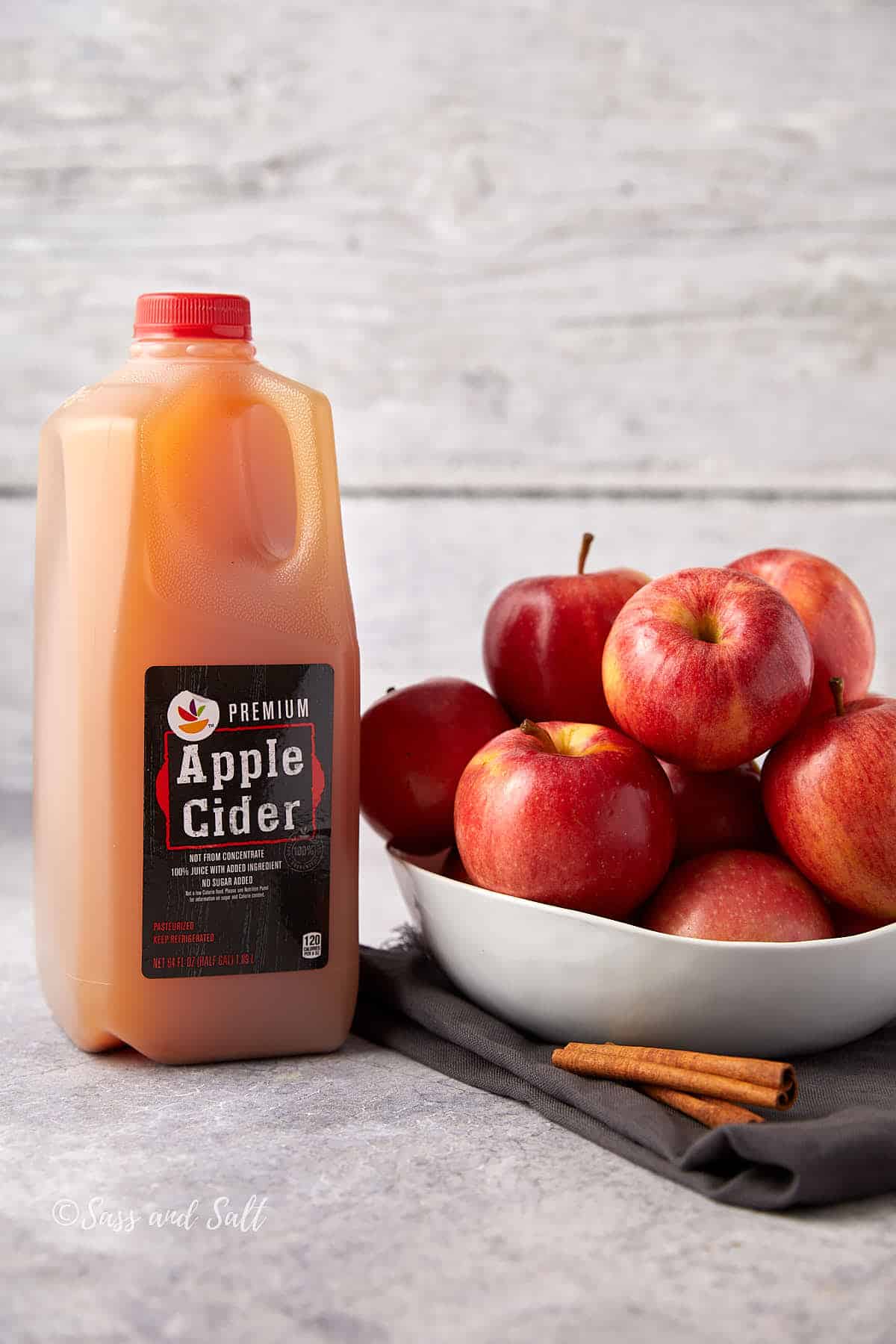
Ingredients:
- 1 quart (4 cups) of fresh apple cider
That’s it! One ingredient, endless possibilities.
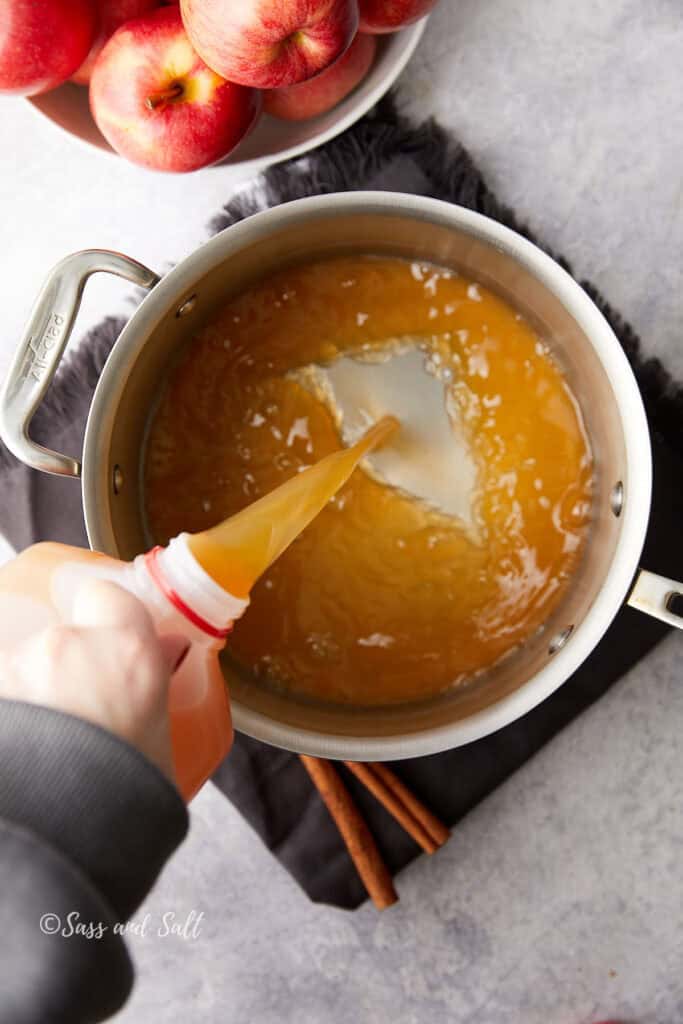
Step 1: Choose the right pot: Grab a heavy-bottomed 3-4 quart saucepan and a wooden spoon or heatproof spatula to stir.
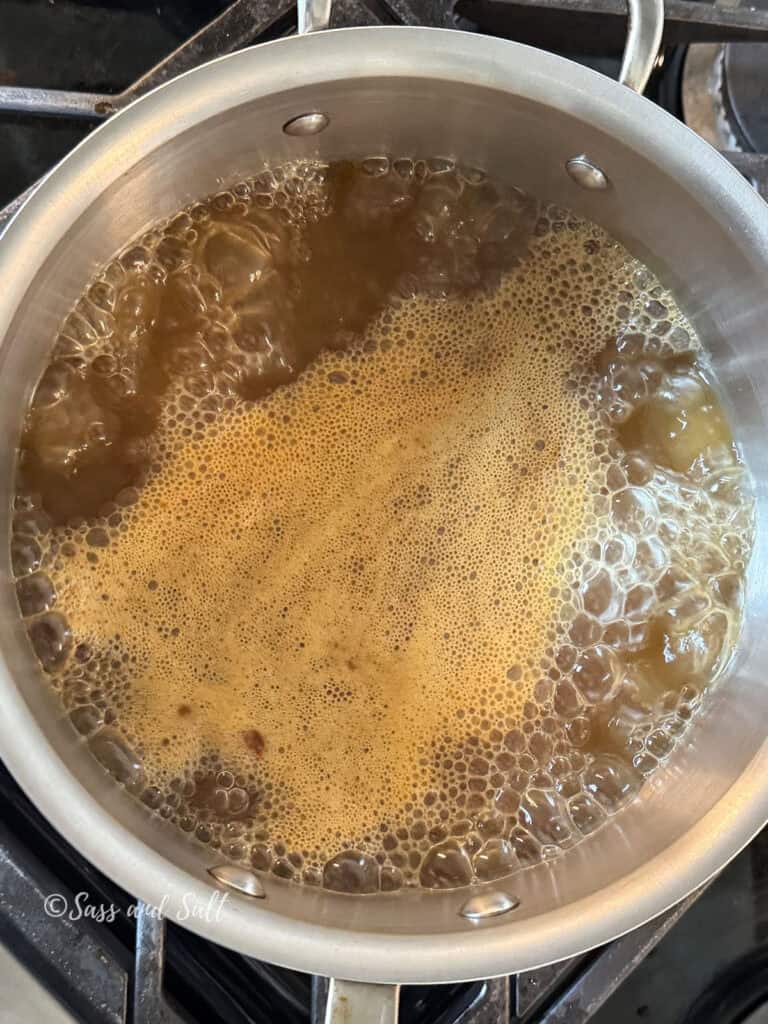
Step 3: Bring the cider to a boil. Place it over medium-high heat and bring it to a boil.
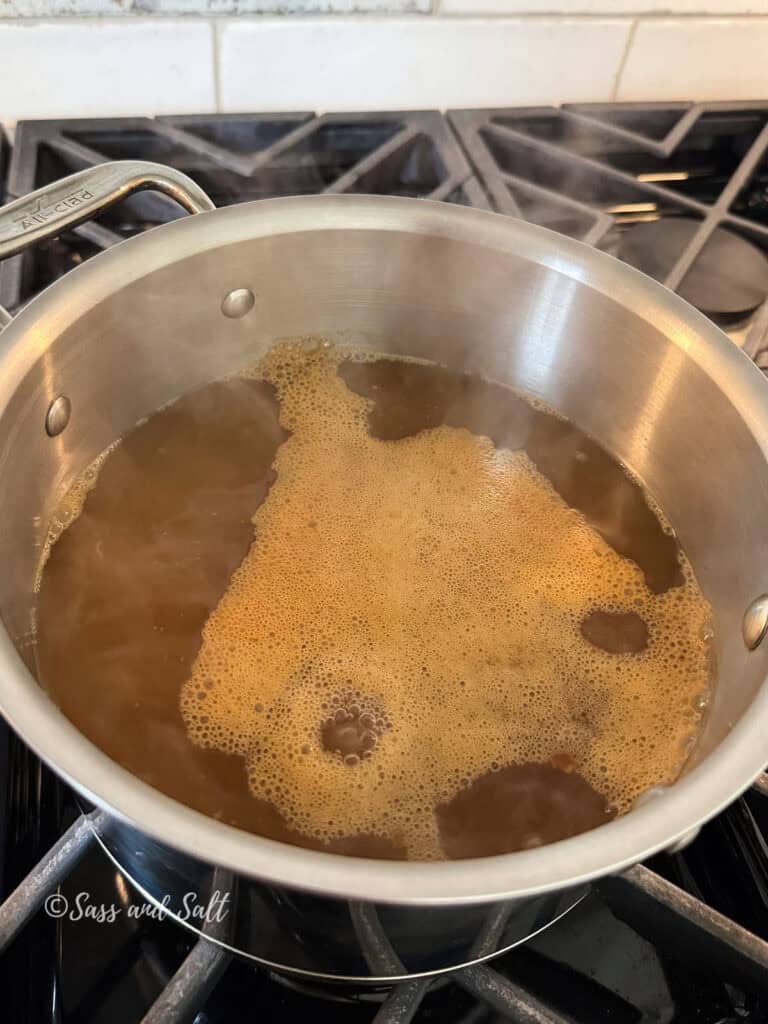
Step 4: Reduce to a simmer: Once boiling, reduce the heat to maintain a steady simmer.
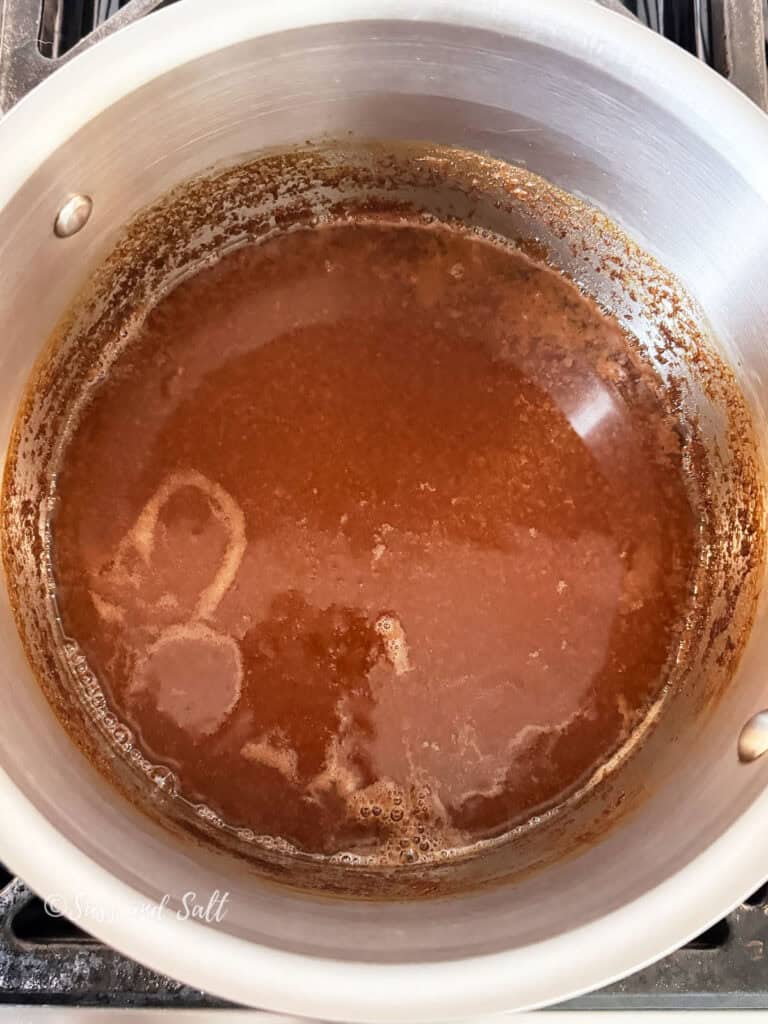
Simmer patiently: Now for the waiting game! Let the cider simmer uncovered for about 2.5-3 hours, stirring occasionally. As the cider gets thicker, you’ll need to stir more frequently to prevent scorching.
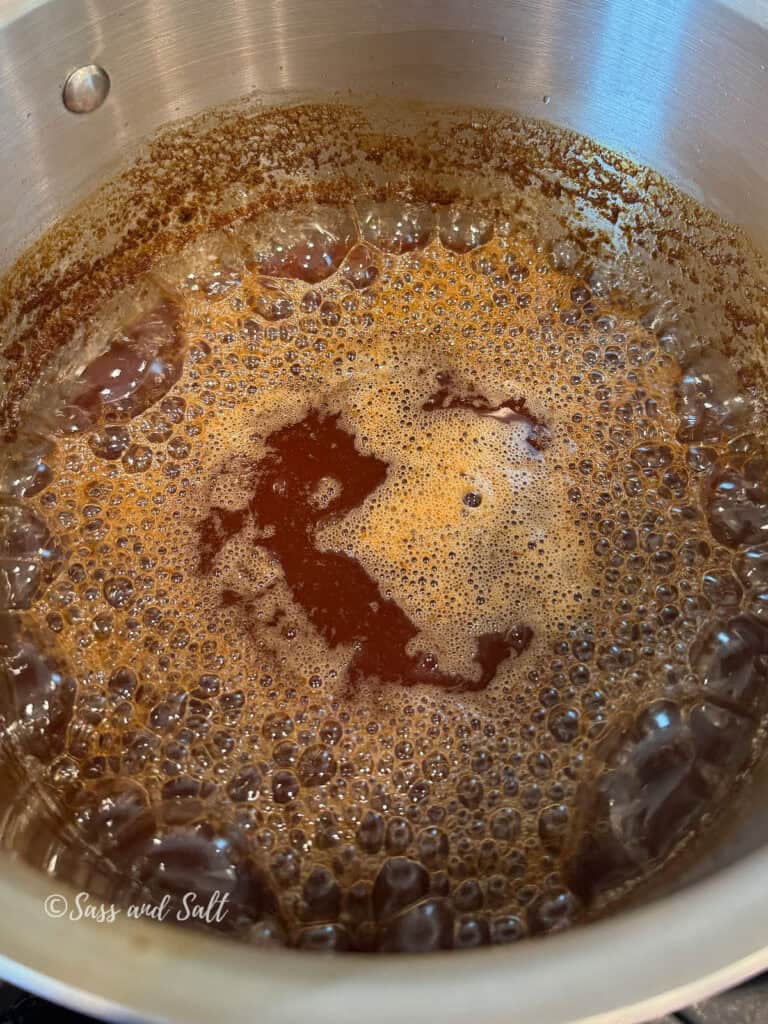
Watch for the signs: You’ll know it’s getting close to done when stirred dark copper-colored bubbles form, covering the entire surface.
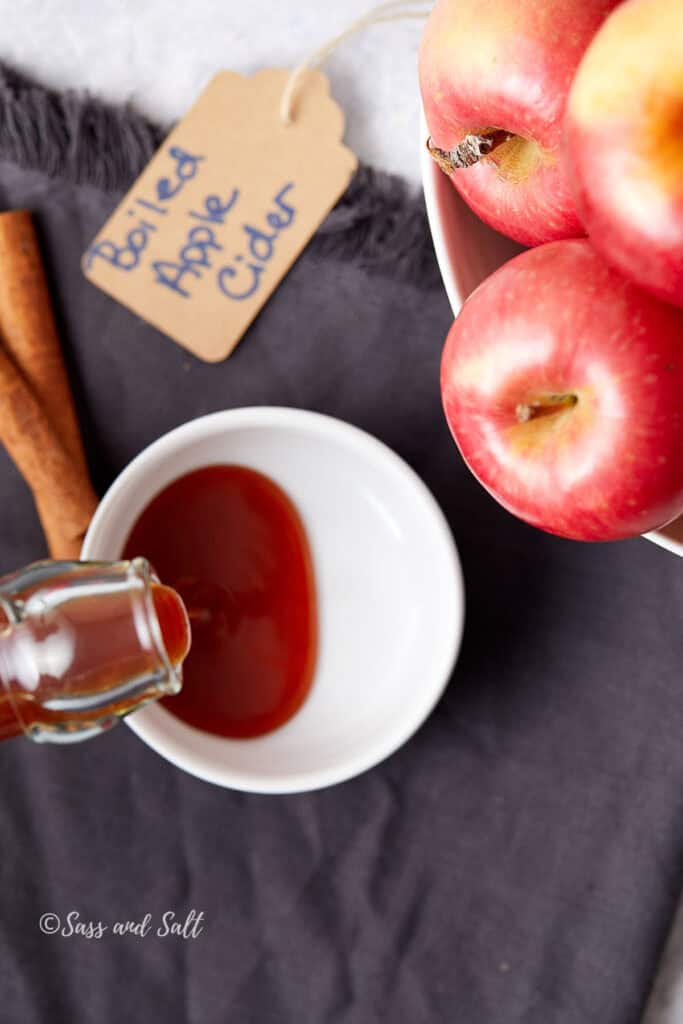
Test for doneness: The cider is ready when reduced to about 1/4 of its original volume (approximately 1 cup to 1 1/4 cup) and has a syrupy consistency similar to warm honey. To test, dip a cold spoon into the syrup—it should coat the back of the spoon nicely.
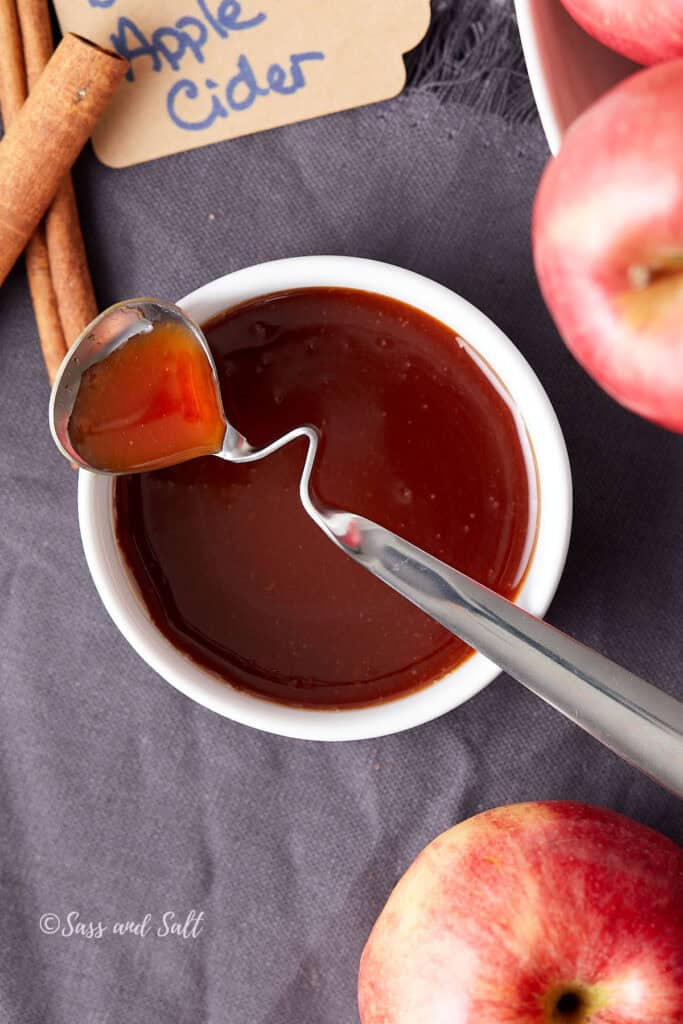
Strain if desired: Remove from heat and let cool slightly, then strain through a fine-mesh strainer if desired (especially if you added spices).
Cool and store: Transfer to a clean glass jar and refrigerate. The syrup will thicken further as it cools.
Tips for the Perfect Boiled Cider Syrup
How to know when it’s done
- The syrup should be thick and coat the back of a spoon, similar to warm honey.
- If overcooked, it may become too thick or bitter—watch for those dark copper-colored bubbles!
Avoid Overcooking
- If slightly overcooked, you can thin it out by adding a small amount of fresh cider and stirring over low heat.
- If boiled too long, the syrup will turn into molasses-like thickness or even a sticky, taffy-like consistency.
Be sure to check out the full recipe and ingredient list below
Flavor Infusions
Customize your syrup with delicious add-ins:
- Cinnamon sticks
- Vanilla beans
- Orange peels
- Whole cloves or star anise
Scaling Tips
- This recipe scales beautifully! I often start with 2 gallons of cider when making holiday gifts, which yields about 4 cups of boiled cider.
- Just make sure your pot is large enough if you’re scaling up. Remember that cider needs plenty of surface area to evaporate efficiently.
- The cook time will vary depending on your stove, the width of your pot, and how rapidly you allow the cider to simmer. Wider pots = more surface area = faster evaporation.
How to Use Boiled Cider – Best Ways to Enjoy Cider Syrup
In Baking:
- Add a few tablespoons to the apple pie filling for an intense apple flavor.
- Swirl into cheesecake batter before baking.
- Enhance quick breads, cookies, or muffins.
As a Glaze:
- Brush over roasted vegetables, pork chops, or chicken.
- Mix with powdered sugar for an easy glaze on cakes and donuts.
- Drizzle over baked ham during the final cooking stage.
In Beverages:
- Stir into hot tea or coffee.
- Mix with sparkling water for a refreshing drink.
- Enhance apple cider or mulled wine.
For Breakfast:
- Drizzle over pancakes, waffles, or French toast.
- Stir into oatmeal or yogurt.
- Blend into smoothies for a burst of apple flavor.
Storage & Shelf Life
- Store in a clean glass jar in the refrigerator.
- Properly stored, it will last at least 12 months.
- The high sugar content acts as a natural preservative.
FAQs About Homemade Boiled Cider
It should coat the back of a spoon and yield about 1 cup from 1 quart of cider.
No! Boiled cider is sweet and concentrated, while apple cider vinegar is fermented and sour. They’re completely different products used for different purposes.
Properly stored in the refrigerator, it will keep for at least 6-12 months. Sealed jars can be kept in the pantry for up to a year if processed in a water bath canner.
They’re essentially the same thing! “Boiled cider” is the traditional New England term, while “apple cider syrup” is sometimes used in other regions, but they refer to the same delicious concentrated apple product.
Try This Homemade Boiled Apple Cider Syrup Recipe!
Now it’s your turn! Make this homemade boiled cider syrup and experience the ultimate fall flavor. I’d love to hear how you used it—drop a comment below and rate the recipe!
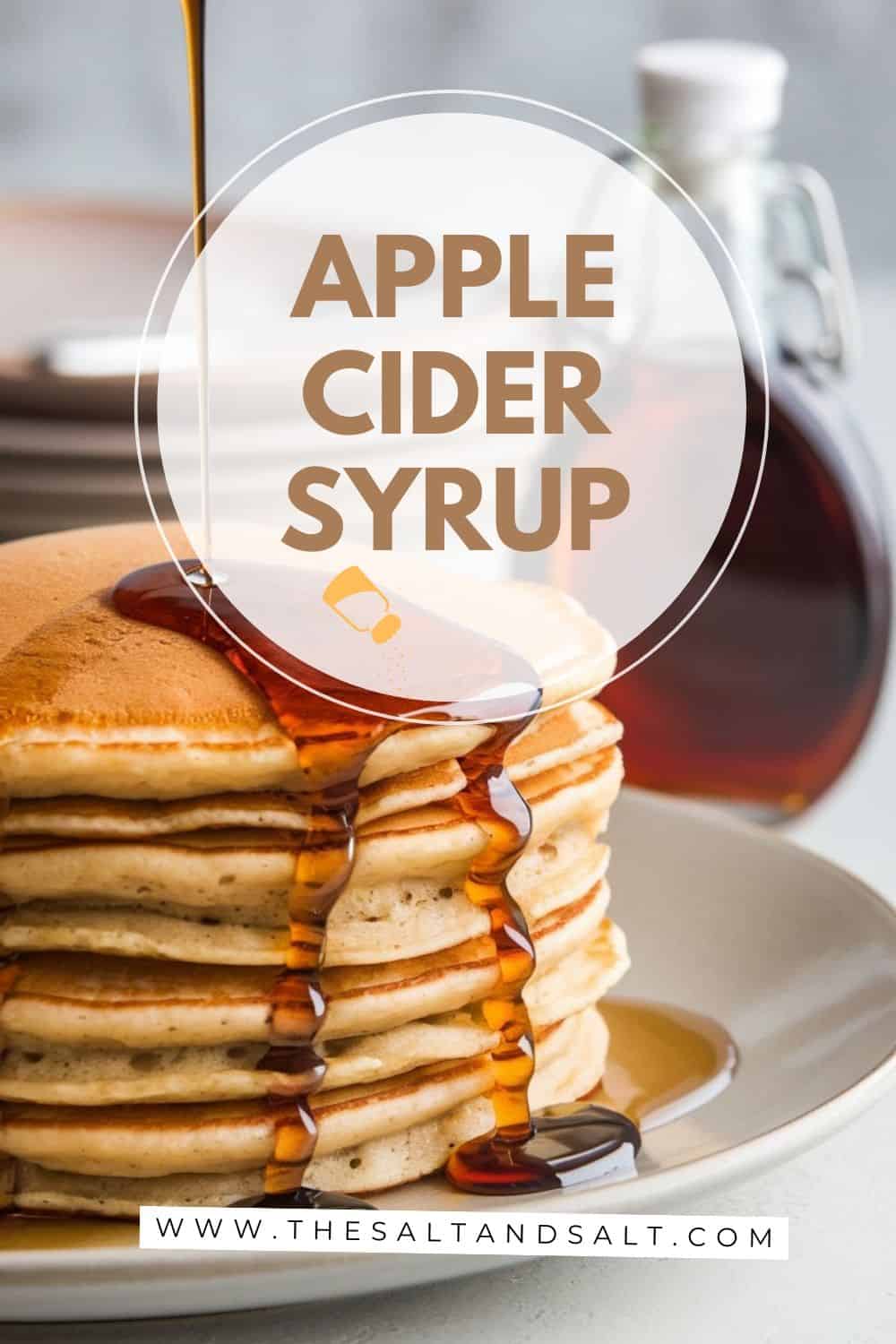

Boiled Cider (Apple Cider Syrup)
Equipment
- Heavy-bottomed 3-quart saucepan
- Fine-mesh strainer (optional)
- Glass jar (for storage)
Ingredients
- 1 quart 4 cups fresh apple cider
- 1 cinnamon stick or 1 vanilla bean split lengthwise (Optional)
Instructions
- Pour the apple cider into a heavy-bottomed saucepan. Add the cinnamon stick or vanilla bean, if using.
- Heat over medium-high until the cider reaches a boil.
- Lower the heat to simmer, uncovered, for 2 1/2 to 3 hours, stirring occasionally.
- The cider is ready when reduced to about 1 cup to 1 1/4 cups and has a syrupy consistency similar to warm honey.
Test for doneness:
- Dip a cold spoon into the syrup—it should coat the back of the spoon.
- Look for dark copper-colored bubbles forming across the surface when stirred.
- Remove from heat and let cool slightly. Strain through a fine-mesh strainer if desired.
- Transfer to a clean glass jar and refrigerate. The syrup will thicken as it cools.
Notes
- Use Fresh Apple Cider – Avoid apple juice, as it lacks the depth of flavor needed for this recipe.
- Consistency Guide – The syrup should have a honey-like texture when warm and will thicken as it cools.
- Storage Tips – Keep in an airtight jar in the refrigerator for up to 12 months; the high sugar content acts as a natural preservative.
- How to Fix Overcooked Syrup – If too thick, reheat gently with a splash of fresh cider until the desired consistency is reached.
- Scaling the Recipe – You can double this recipe, but use a wide, heavy-bottomed pot to allow for even evaporation.
- Uses – Perfect in baking, glazes, marinades, and beverages. Try it in Apple Cider Muffins or Apple Cider Whoopie Pies for an enhanced apple flavor.

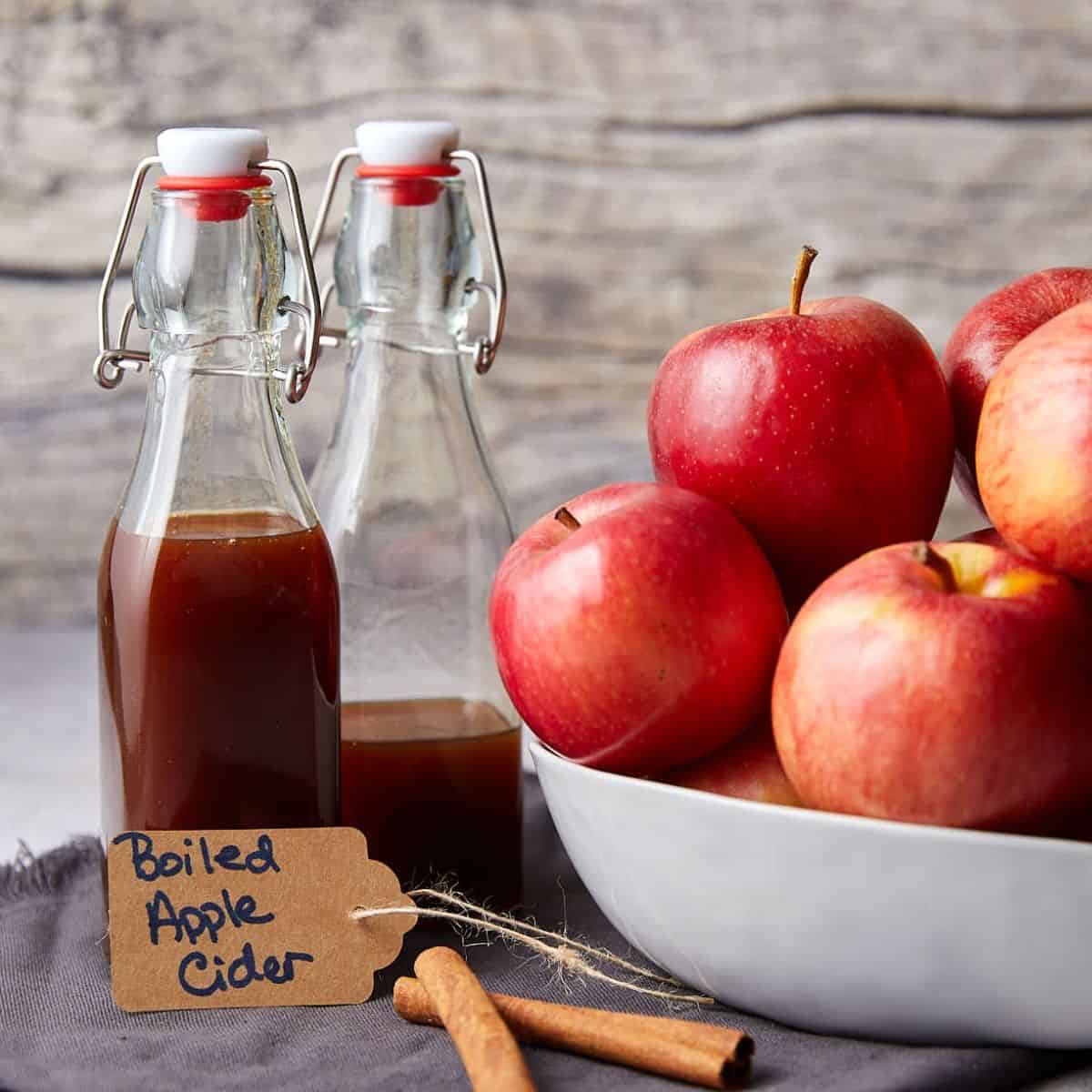
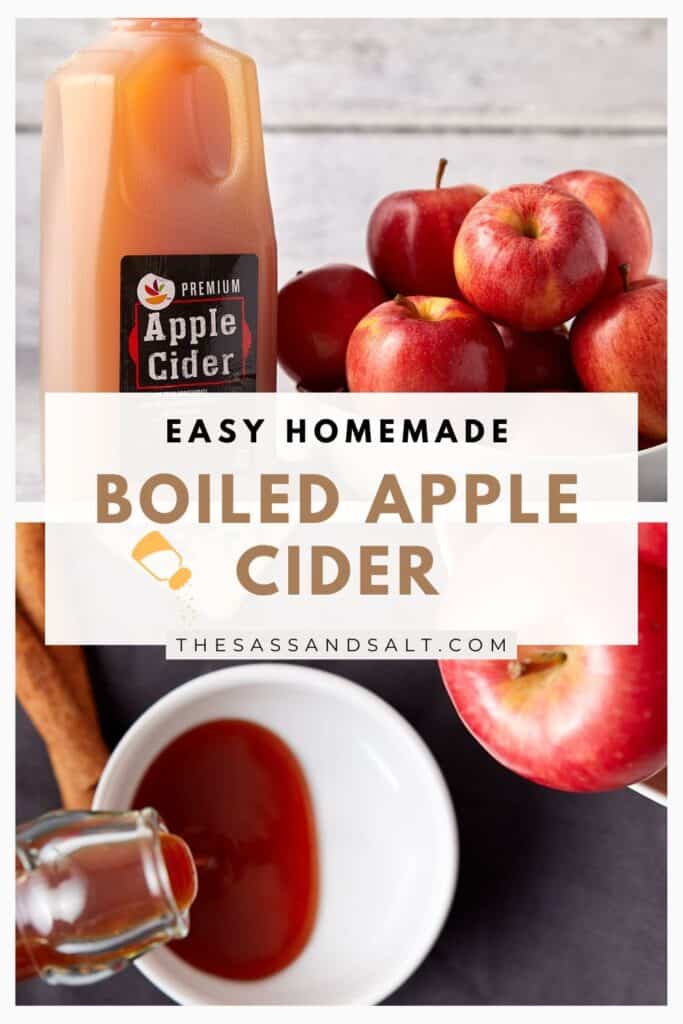



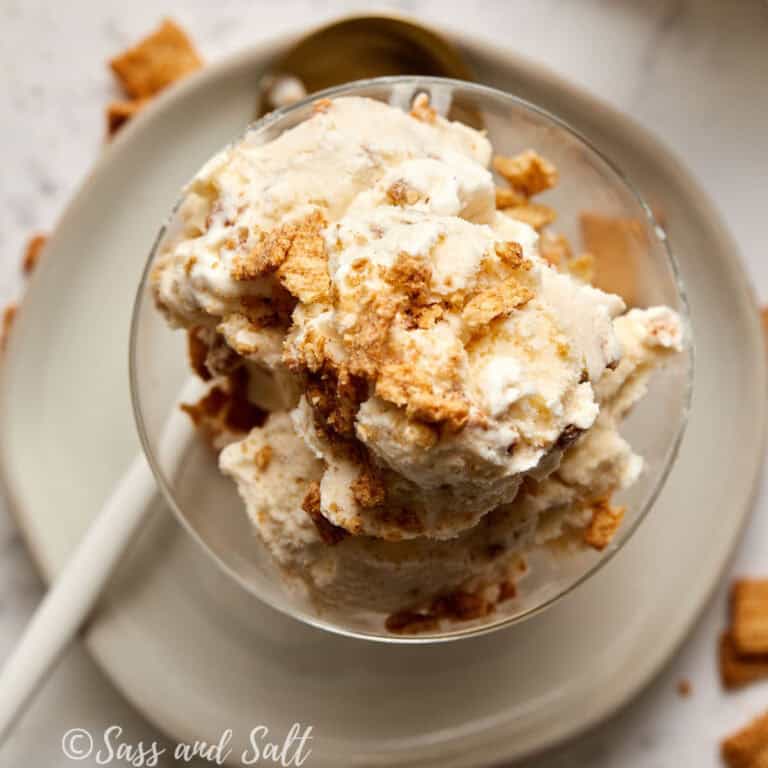

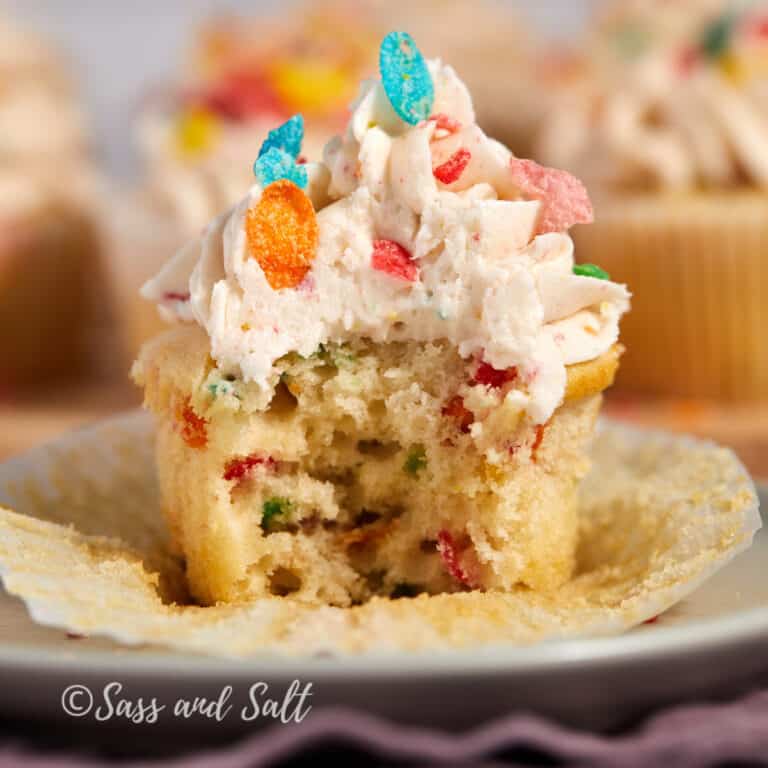
I love adding this to my apple pies at Thanksgiving. It’s that little something to put them over the top. I used to buy it online from King Arthur, but when I realized how simple it was to make on my own I’ve been making it ever since. Taste great on pancakes and waffles too!
That’s so great to hear! There’s something really satisfying about realizing you can make something at home that you’ve been buying. And yes on pancakes and waffles is chef’s kiss. Thanks for taking the time to leave a comment!